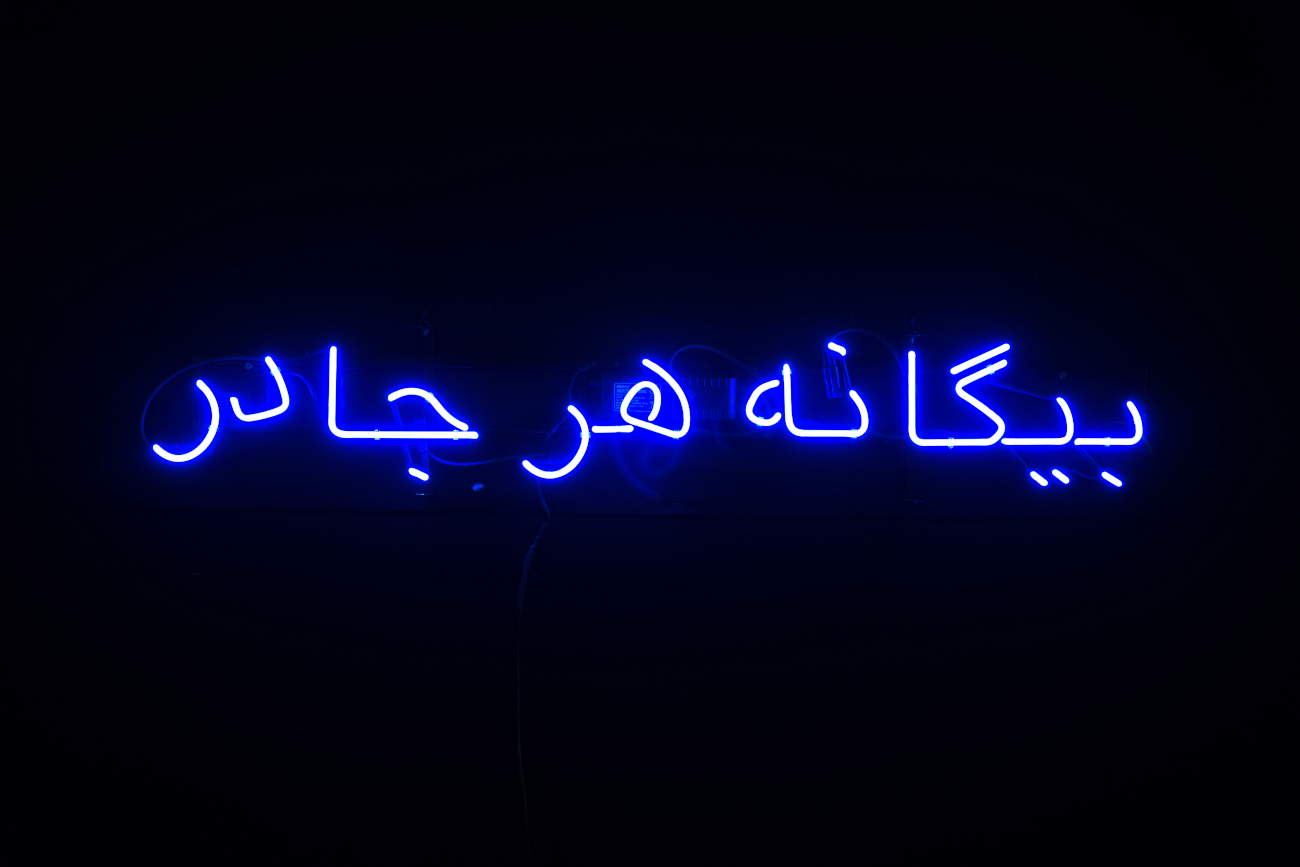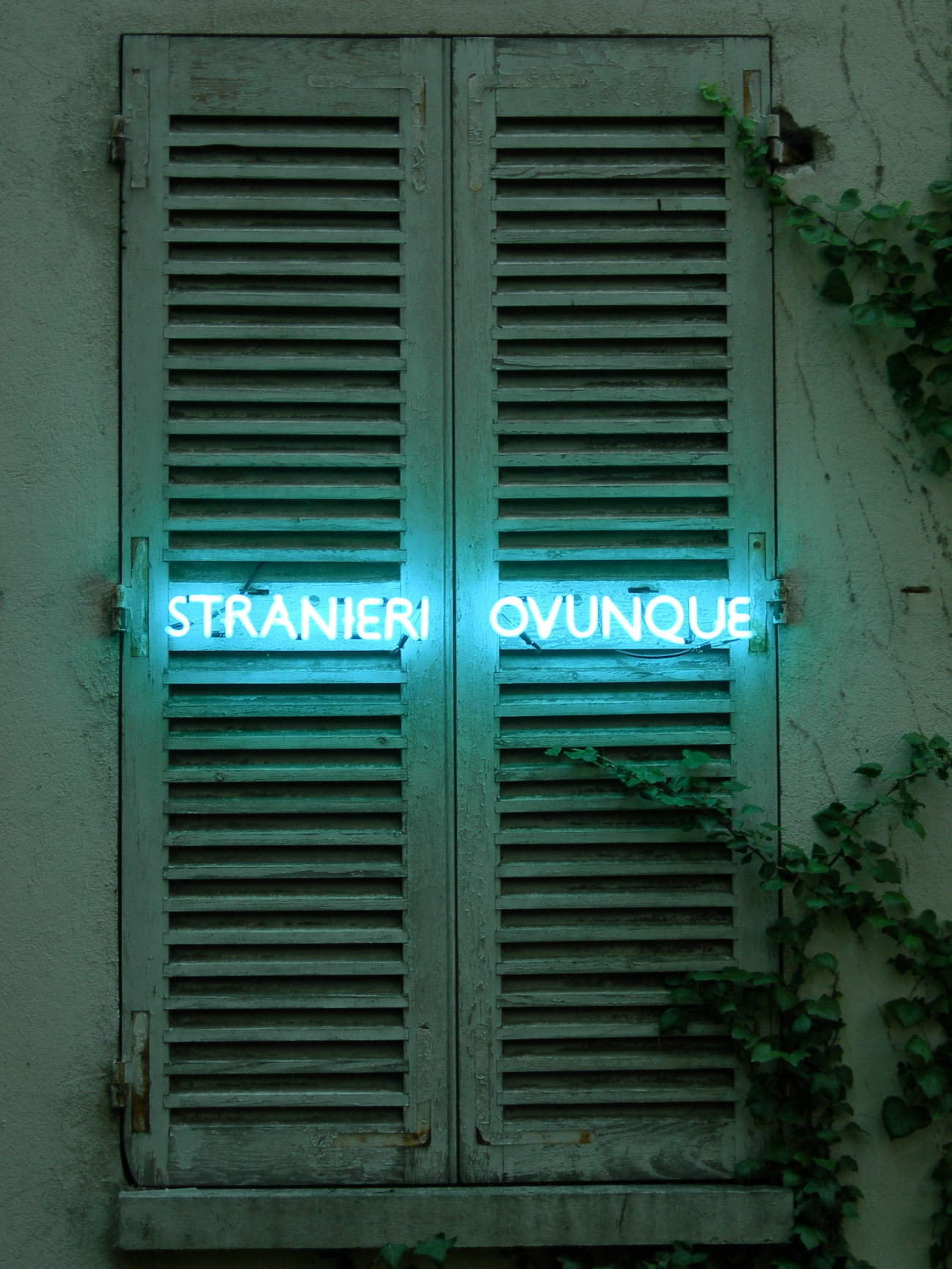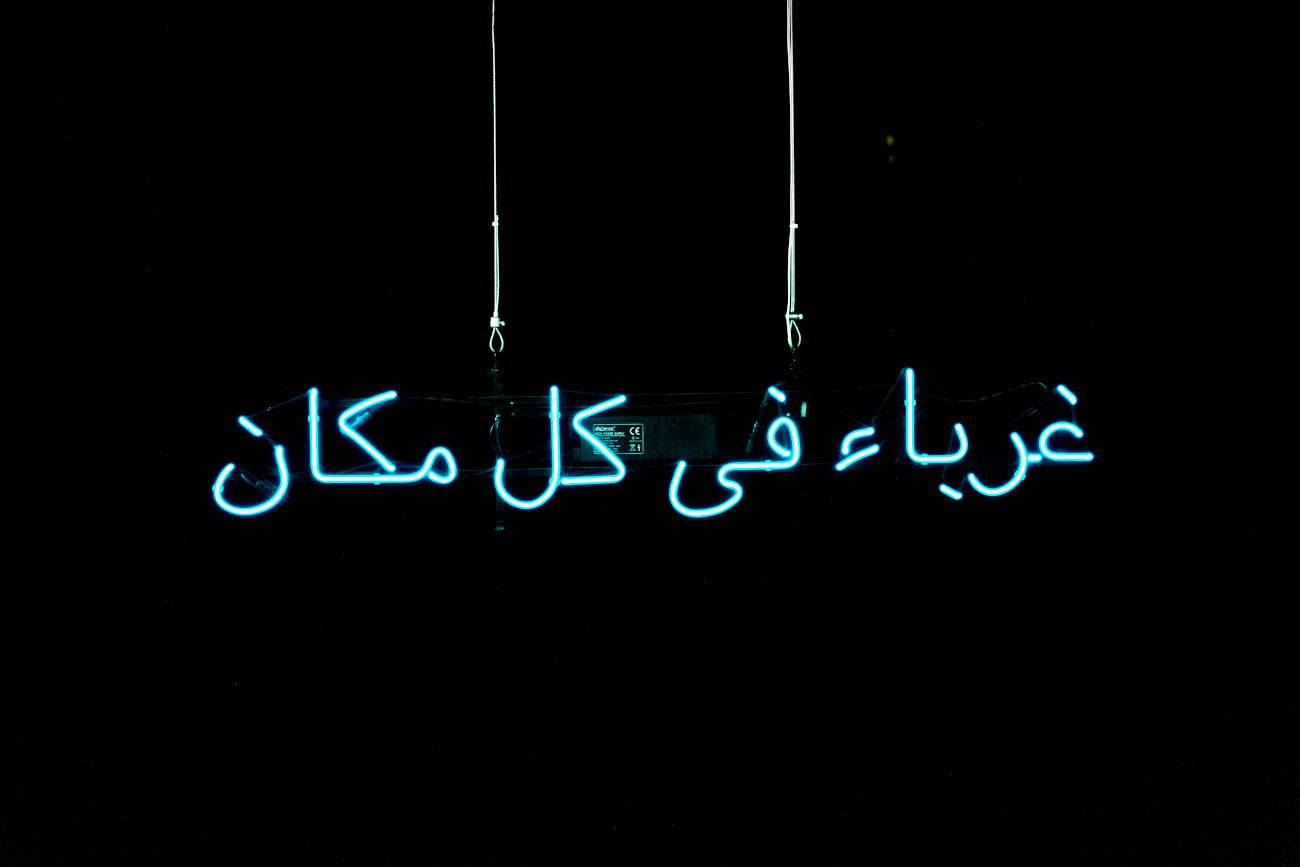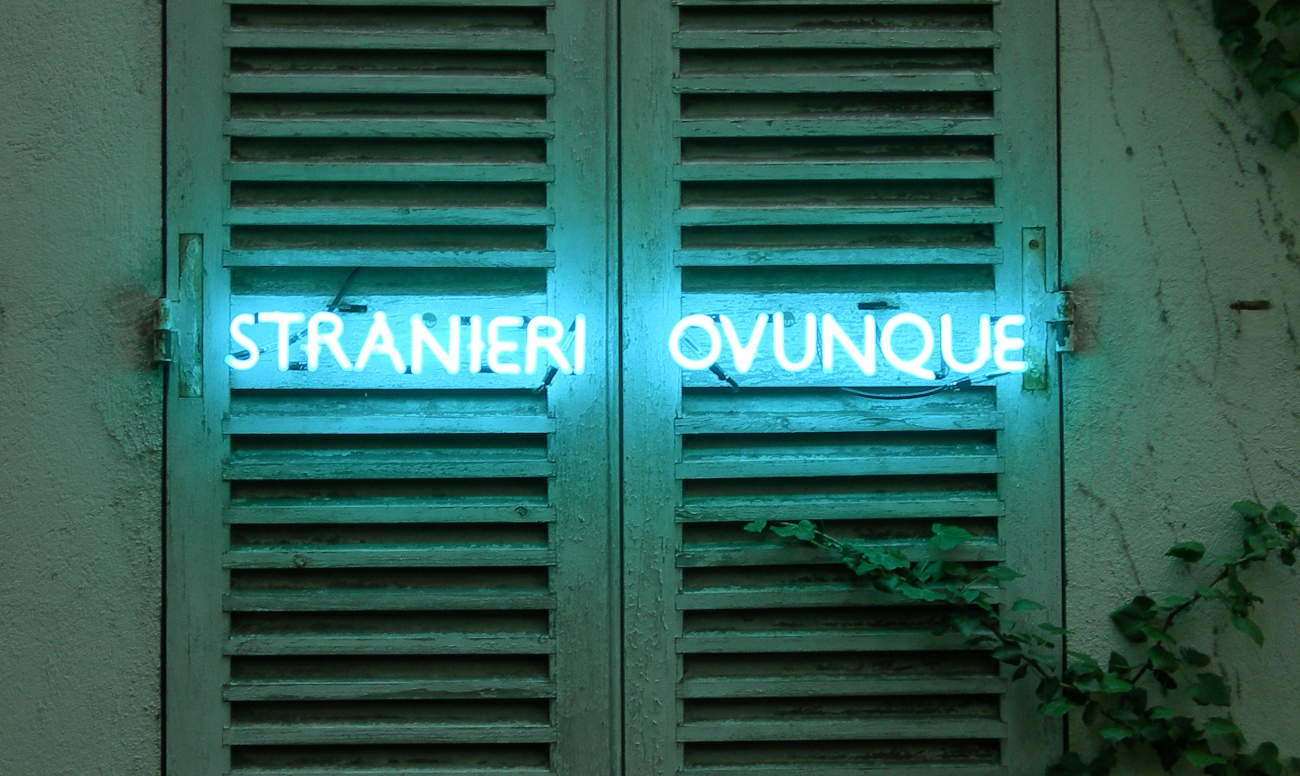Strangers Everywhere, Claire Fontaine's project, enters the permanent collection of the Castelbuono Museum
Will be presented to the public on May 19, at the Civic Museum of Castelbuono (Palermo), Foreigners Everywhere by the Claire Fontaine Collective, the winning project of the public notice PAC2022-2023 - Plan for Contemporary Art, promoted by the Ministry of Culture’s Directorate General for Contemporary Creativity. The Civic Museum acquires three works from the series Foreigners Everywhere - Foreigners Everywhere. The work, which gives the title to the 60. Venice International Biennial of Visual Arts, becomes part of the permanent collection of the Castelbuono Civic Museum. A conference will also be held on Thursday, May 23 at 11 a.m. at theAcademy of Fine Arts, Palermo, with keynote addresses by Claire Fontaine, and Marco Scotini, artistic director of FM Centro per l’Arte Contemporanea and director of the Department of Visual Arts and Curatorial Studies at NABA, Milan, with an institutional greeting by Umberto De Paola, director of the Academy of Fine Arts, Palermo.Laura Barreca, Director of the Civic Museum of Castelbuono and professor of Art History at the Academy of Fine Arts of Catania, will introduce.
The work composed of a series of three neon sculptures in Italian, Arabic and Persian is part of a series that began in 2004 and to date includes sixty languages, including several indigenous idioms and some of them extinct, currently visible in an installation at the Gaggiandre, at the Venice Arsenal. The illuminated writings express a condition of ambivalence that we can feel foreign anywhere, due to experiences of social exclusion or discrimination that generate a feeling of not belonging to a community, reinforcing the feeling of being “foreign.” The use of different languages highlights the foreigner’s need to submit one language to another in order to be understood, while being culturally “colonized.”
"The acquisition of the work Strangers Everywhere by Claire Fontaine fits coherently into the cultural directions of the Civic Museum of Castelbuono, as it enriches the collection with a work of great ethical value, an expression of a condition of individual and collective marginalization at the same time. These works, due to their linguistic power and intrinsic communicative force, offer the representation of a universal contradiction, and allow us, as cultural institutions, to publicly solicit a now unavoidable reflection related to the current international political chaos," says Laura Barreca, Director of the Civic Museum of Castelbuono.
“Those who arrive from elsewhere put us in touch with our ignorance and give us back an image of ourselves that we had never seen before-the image of us as foreigners. The unknown can appear threatening because broadening one’s horizons is tantamount to losing one’s certainties, which we conceive of as material possessions, which we believe we can accumulate thus stabilizing ourselves in one place. Of those who are natives of a place it is said for brevity that they are ”of“ a city. The connection to a place is experienced as belonging; ”our“ land is linked to the imaginary private property that is identity, in its specific variant, the national one. ”How many people today live in a language that is not their own? - Deleuze and Guattari ask us in Kafka, for a minor literature “This is the problem of migrants, and especially of their children, the problem of the minority (...) but also a problem for all of us: how to extract a minor literature from its own language, allowing it to challenge language and follow a sober revolutionary path? How to become a nomad and a migrant and a gypsy with respect to one’s own language? Kafka answers: steal the baby from the cradle, walk the tightrope.” One must “find one’s own point of underdevelopment, one’s own dialect, one’s own third world, one’s own desert,” said collective Claire Fontaine.
Claire Fontaine calls herself a collective artist founded by James Thornhill and Fulvia Carnevale in 2004 in Paris. Her name is a pseudonym that sounds like the proper name of a French woman, inspired by Duchamp’s urinal (Fontaine) and a well-known French stationery brand (Clairefontaine), deliberately wanting to create the misunderstanding by not directly associating their biographies with the works, so that the work can be transformed into a space of freedom. Claire Fontaine uses a variety of mediums and refuses the obligation of formal recognition in her work, which she instead sees as experimental research in progress, an ongoing exploration. Claire Fontaine has exhibited all over the world and her works can be found in the collections of major museums and international cultural institutions. She has been living and working in Palermo since 2017.



 |
| Strangers Everywhere, Claire Fontaine's project, enters the permanent collection of the Castelbuono Museum |
Warning: the translation into English of the original Italian article was created using automatic tools. We undertake to review all articles, but we do not guarantee the total absence of inaccuracies in the translation due to the program. You can find the original by clicking on the ITA button. If you find any mistake,please contact us.




























